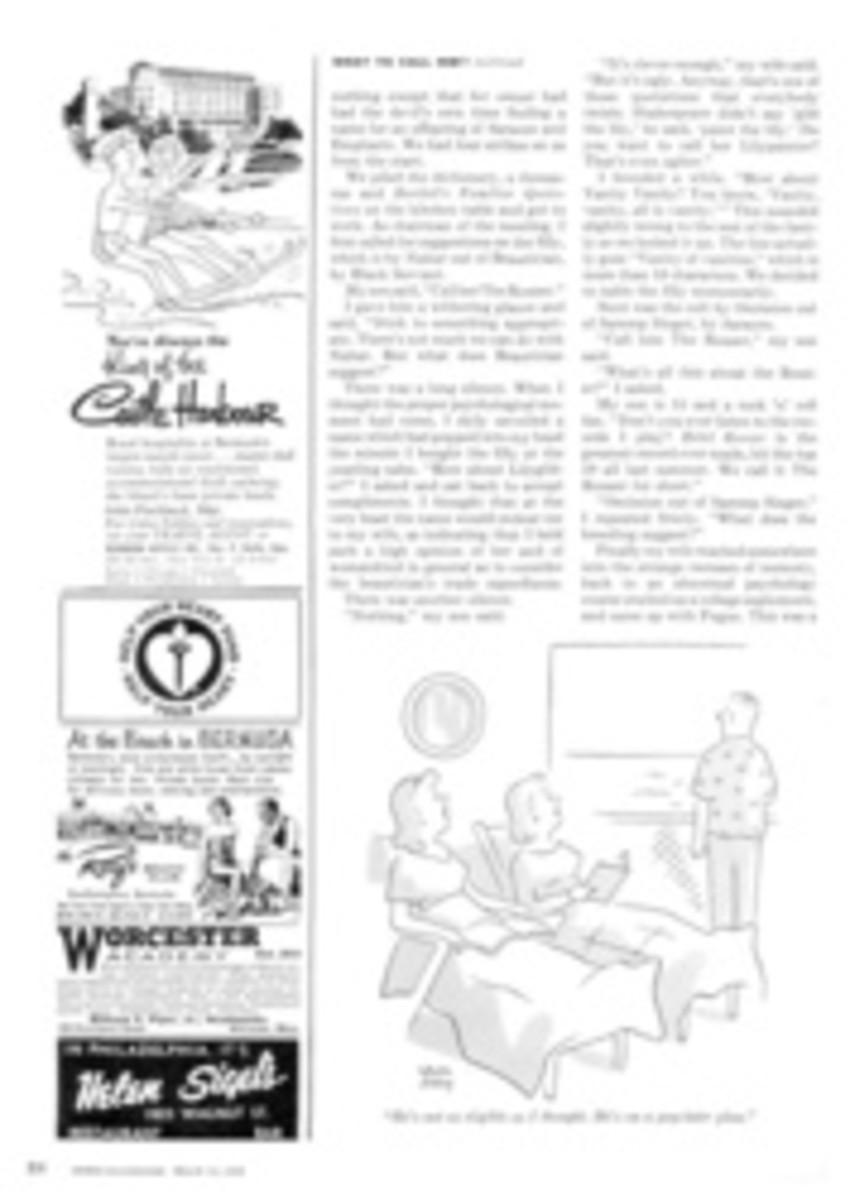
QUESTION: I would like to go to the Olympics at Squaw Valley next year. Do I need to start thinking now about tickets and reservations?
YES. Even though the Olympics are a year away, there is already a run on tickets and bed space. All tickets will be gone by November of this year. By last week some 5,000 daily admissions had been sold already, so now is the time to send for a ticket application. Write to: Organizing Committee, VIIIth Olympic Winter Games, 333 Market St., San Francisco 5. Price per person is $7.50 a day general admission, $60 for the whole 11 days. The main figure skating and hockey events in the limited seating of the ice arena will cost you at least an additional $200 for all 11 days. (Don't send any money until you have your application, however. Ticket details will be made clear in your application blank.) All other events are included in price of general admission.
Whereas tickets are still in good supply, housing within easy commuting distance of Squaw Valley is less easily come by. In order to avoid confusion, duplicity or duplication, an Olympic housing office has been set up. Best way to get a reasonably priced room is to write the Housing Director, Winter Olympics, Squaw Valley, Lake Tahoe, Calif. and ask for the application blank where you can list in preferential order three towns in which to stay.
To help you pick the towns, the accompanying map (right) divides the Far West into six regions with Squaw Valley at its center. (In order to use the information below, the divisions are to be imagined as extending beyond the map. If a town is shown on the map, its name will be in italics.) Squaw Valley has no housing for other than Olympic athletes and officials (some of the latter will stay outside). Most desirable is EAST region of map. It includes territory nearest Squaw, east of Donner Pass. In EAST the area around four towns can accommodate 7,000 people. In order of closeness to Squaw Valley (mileage is given in parenthesis) they are: Tahoe City (7), Truckee (10), Homewood (14) and Tahoe Vista (16). Accommodations here are already tight, but it's worth listing one of them as a preference just on the chance you might make it. NORTHEAST region on map is your best bet for a reservation if you write now. This is the Reno-Sparks area, which has room for 14,000 people. It's a 45-mile drive to Squaw by Route 40, the transcontinental highway kept open through Donner Pass (see A) in storms that might close others. In WEST, near Dormer Pass on Route 40, are Soda Springs (20) and other small winter resorts for about 2,500. However, this is another spot where reservations are tight. Farther off in WEST are Nevada City (65), Grass Valley (69) and Colfax (65). Colfax is preferable because it is on Route 40. Towns in SOUTH are closer or almost as close as Reno-Sparks, but Route 28 is not plowed as diligently in a storm as Route 40. Area holds about 6,000. Main towns are Glen-brook (37), Stateline (54) and Bijou (55). In winter, Route 89 is closed at Emerald Bay (see B) and traffic has to go around the lake to get to Squaw.
Virginia City (57) and Carson City (47) and points below them should be considered SOUTH because the road over Mt. Rose (see C) is often closed in winter, and traffic from this area to Squaw goes through Glenbrook. There are towns farther away in SOUTH but Luther Pass (see D) is closed in winter, and you are better off staying in SOUTHWEST towns which connect to Squaw along Routes 50 and 40. It's 80 miles from Auburn, 90 from Placerville, 113 from Sacramento through Donner to Squaw. If Donner closes, which it may do in a really severe storm, there is an outside chance that Echo Pass (see E) on Route 50 will stay open. In this case mileages are: Sacramento 151, Placerville 107, Auburn 132. SOUTHWEST offers late applicants a sure bed, but if you don't want the long drive, try marking towns in NORTHWEST as a preference. Sierraville (38), Blairsden (61) and Portola (65) have limited accommodations but they're a lot closer.
PHOTO
MAP
SQUAW VALLEY area lies on California-Nevada border (dotted line), is shown here divided by solid lines into six regions for purposes of assessing housing possibilities.
NORTHWEST
SIERRAVILLE
CALIFORNIA
NORTHEAST
RENO
SPARKS
WEST
SODA SPRINGS
89
40
A
40
TRUCKEE
TAHOE VISTA
SQUAW VALLEY
28
TAHOE CITY
HOMEWOOD
EAST
VIRGINIA CITY
C
27
CARSON CITY
50
28
SOUTHWEST
89
LAKE TAHOE
B
BIJOU
50
E
SOUTH
GLENBROOK
NEVADA
STATELINE
D
88

